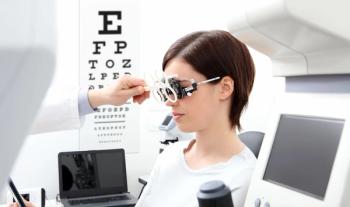
Studies finger dirty hands in noncompliance
Whenever Jack Schaeffer, OD, sees a patient with contact lens complications at his Birmingham, AL, practice, the first thing he asks about is compliance.
Their patients are not alone. As many as one in four patients do not wash their hands before putting in or taking out the CLs. This, in turn, leads to increased lipid deposits being transferred from the skin to the lens surface, according to two studies published online in the journal Contact Lens and Anterior Eye. The transfer of lipids can adversely affect tear film stability, visual acuity and comfort, and heighten the risk of bacterial contamination.
In one study, researchers led by Darren Campbell, PhD, of the Biomaterials Research Unit at Aston University in Birmingham, England, found that lipids from unwashed hands could easily be detected, while hand washing reduces the lipid concentration transferred to CLs.
For their study, Dr. Campbell's group had each of 10 study subjects handle one set of CLs after no hand washing, a second set after a social hand wash, and a third after following the Royal College of Nursing (RCN) guidelines for hand washing. A social hand wash is a typical hand-washing regimen, whereas the RCN wash is a six-point technique medical professionals use.
The researchers used thin layer chromatography plates to detect the presence of lipids on the subjects' hands. On a scale of 1 (low deposits) to 4 (high deposits), the average scores were 3.4 after no hand washing, 2.2 after social hand washing, and 1.2 after the RCN hand wash.
The researchers also examined the CLs using fluorescence spectroscopy. The average number of fluorescence units, indicating the intensity of lipid deposits on the lenses, was 28.47 after no hand washing, 13.52 after the social hand wash, and 6.47 after the RCN hand wash.
Newsletter
Want more insights like this? Subscribe to Optometry Times and get clinical pearls and practice tips delivered straight to your inbox.
















































.png)


